Instrumentation in Musical : Music composition is a captivating art form that weaves together various elements to create symphonies and musical works that resonate with listeners on a profound level. At the core of this creative process lies the intricate craft of instrumentation, which plays a pivotal role in shaping the sound and emotional impact of a composition.
Instrumentation refers to the selection and arrangement of different musical instruments to bring a composer’s vision to life. It involves carefully choosing the instruments that will best convey the desired mood, texture, and overall aesthetic of the piece. By skillfully orchestrating diverse instruments, composers can create a symphony of timbres and colors that elevates their musical compositions to new heights.
Key Takeaways:
- Instrumentation is a crucial aspect of musical composition, influencing the sound and emotional impact of a piece.
- Composers carefully select and arrange different musical instruments to create a unique symphony of timbres and colors.
- Instrumentation enhances the overall aesthetic and storytelling potential of musical compositions.
- Through instrumentation, composers have the power to evoke emotions and captivate audiences.
- By understanding the nuance of instrumentation, listeners can gain a deeper appreciation for the artistry behind musical compositions.
The Essence of Music Composition
In the realm of music composition, certain elements form the foundation of a captivating piece. Melody, harmony, rhythm, and texture work harmoniously together to create a rich and fulfilling musical experience.
The Power of Melody
Melody is the heart and soul of a composition. It is a sequence of notes crafted with remarkable intricacy and creative intent. Through the artful arrangement of repetition, variation, and contour, melodies have the ability to evoke profound emotions within the listener. Melodies can be gentle and soothing or vibrant and exhilarating, serving as a powerful medium for artistic expression.
Harmony’s Depth and Richness
Harmony provides the foundation for a composition’s depth and richness. It involves the simultaneous combination of different pitches, producing a harmonious blend of sounds. By seamlessly intertwining multiple voices or musical parts, harmonies add layers of complexity and complexity to a composition, transforming it into a vibrant sonic tapestry.
The Dynamic Drive of Rhythm
Rhythm sets the pace and infuses energy into a composition. It establishes the structure and propels the piece forward, creating a sense of movement and momentum. From a gentle and subtle pulse to an invigorating and dynamic beat, rhythm breathes life into a composition, captivating the listener from the first beat to the last.
The Interplay of Texture
Texture refers to the interweaving layers of musical elements within a composition. It encompasses the relationships between melodies, harmonies, and rhythms, painting a vivid sonic landscape. Texture can vary from the simplicity of a single melodic line, known as monophonic texture, to intricate polyphonic harmonies with multiple voices. This interplay of musical elements adds depth, complexity, and beauty to the composition, allowing listeners to experience a multi-dimensional auditory journey.
Summary Table: Elements of Music Composition
| Element | Description |
|---|---|
| Melody | The heart and soul of a composition, crafted with repetition, variation, and contour to evoke emotions. |
| Harmony | Lends depth and richness to a composition by combining different pitches simultaneously. |
| Rhythm | Sets the pace, establishes structure, and infuses energy into the composition. |
| Texture | The interweaving layers of musical elements, ranging from simple monophonic melodies to complex polyphonic harmonies. |
The Journey of Musical Creation
The process of music composition is a remarkable journey that encompasses various stages, each playing a significant role in creating a captivating piece. From finding inspiration to refining and finalizing compositions, composers navigate through a creative and introspective process that brings their musical ideas to life.
Inspiration:
Every composition begins with a spark of inspiration. Whether it’s a personal experience, nature’s beauty, or the exploration of emotions, composers draw from various sources to ignite their creative process. Inspiration serves as the foundation, grounding the composition in a meaningful and relatable context.
Exploration and Sketching:
Once inspired, composers embark on a journey of exploration and sketching. This phase involves experimenting with melodies, harmonies, rhythms, and textures to give life to musical ideas. Through playful exploration, composers test different combinations, seeking the perfect balance that resonates with their creative vision.
Structure and Form:
As the composition takes shape, composers focus on creating a coherent structure and form. This involves organizing musical elements to create a seamless flow that engages listeners from start to finish. Harmonic progressions, chord structures, and melodic arcs become the building blocks that contribute to the overall narrative of the composition.
Development:
During the development stage, composers refine their compositions, paying close attention to melodies, harmonies, and rhythms. This is the time to shape the musical ideas, ensuring they evoke the desired emotions and connect with the intended audience. It is a process of careful crafting and meticulous attention to detail.
Orchestration/Arrangement:
When multiple instruments are involved, orchestration and arrangement take center stage. Composers carefully select instruments or voices, assigning musical parts to create a harmonious blend of sounds. This orchestration adds depth, complexity, and color to the composition, enhancing its overall impact.
Revision:
Finally, composers engage in introspective revisions to refine and polish their compositions. This stage involves critical evaluation, making adjustments, and seeking perfection. Composers listen attentively, fine-tuning melodies, harmonies, rhythms, and nuances to achieve the desired artistic expression.
This journey of musical creation is a testament to the dedication, skill, and passion of composers. Each stage contributes to the evolution of a composition, resulting in a harmonious and captivating piece that engages and moves its listeners.
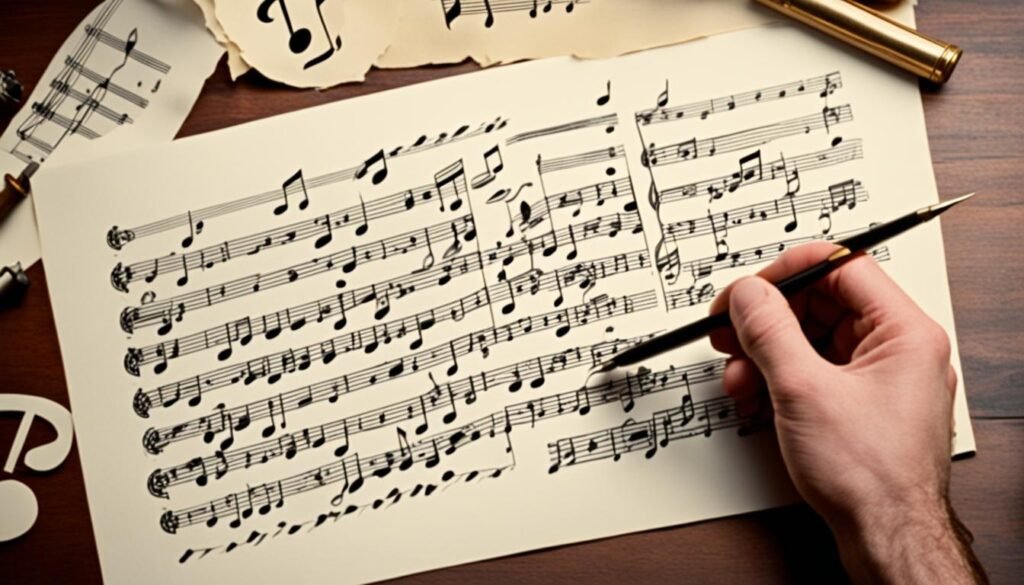
Structure and Form Elements
| Elements | Purpose |
|---|---|
| Melody | Evokes emotions and creates musical identity |
| Harmony | Adds depth and richness to the composition |
| Rhythm | Sets the pace and establishes the composition’s flow |
| Texture | Weaves layers of musical elements for complexity |
| Structure | Provides coherence and guides the listener |
| Form | Determines the composition’s overall framework |
Instrumentation in Musical Composition
Instrumentation plays a vital role in musical composition, especially when multiple instruments are involved. Composers carefully orchestrate their works by assigning musical parts to different instruments, creating a symphony of timbres and colors that enhance the overall sound of the composition.
When it comes to composing music, the choice of instruments is crucial in shaping the desired sonic landscape. Each instrument brings its unique characteristics and sonic qualities, contributing to the richness and depth of the composition. By skillfully combining multiple instruments, composers can create a diverse palette of timbres and colors, resulting in a captivating and harmonious musical experience for the listener.
“The orchestra, as a grand collective of diverse instruments, offers limitless possibilities for expression. By carefully selecting the instruments and assigning musical parts, composers can paint a vivid sonic picture, bringing their musical vision to life.” –John Williams
The Role of Orchestration
Instrumentation goes hand in hand with orchestration, which involves arranging the individual musical parts for each instrument within a composition. This intricate process requires a deep understanding of each instrument’s capabilities, technicalities, and expressive qualities. By skillfully orchestrating a composition, composers bring balance, unity, and coherence to their musical works.
A Symphony of Timbres and Colors
When multiple instruments join forces in a composition, they create a harmonious blend of timbres and colors. Each instrument, with its unique sound characteristics, adds a layer of intricacy and complexity to the piece. The interplay between instruments allows for dynamic contrasts and subtle nuances, immersing the listener in a sonic journey of emotion and expression.
| Instrument | Timbre | Color |
|---|---|---|
| Violin | Bright and expressive | Warm and vibrant |
| Flute | Ethereal and delicate | Airy and light |
| Cello | Rich and resonant | Deep and melancholic |
| Trumpet | Bold and triumphant | Bright and powerful |
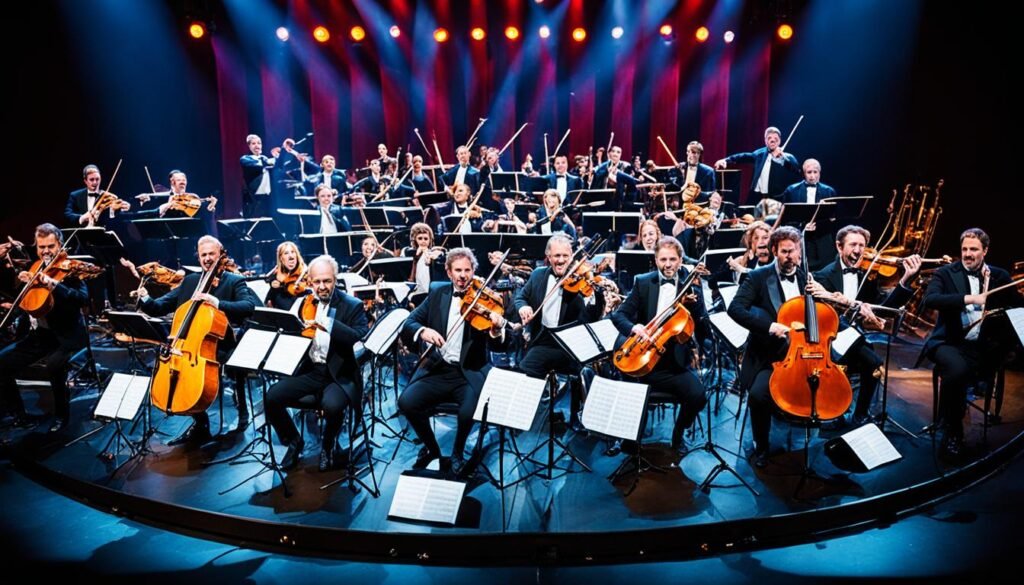
Just as a painter mixes different colors to create a stunning canvas, composers expertly blend various instruments to compose a breathtaking musical masterpiece. The careful selection of instruments and the thoughtful arrangement of their musical parts create a sonic landscape that captures the listener’s imagination, evoking a range of emotions and leaving a lasting impression.
The Impact of Instrumentation
Studies have shown that incorporating different instruments in musical compositions has a profound impact on listener engagement and emotional experience. The unique sound produced by each instrument creates a rich and diverse sonic landscape, captivating the audience and leaving a lasting impression.
When multiple instruments are artfully combined, they can evoke a wide range of emotions, from joy and excitement to sorrow and nostalgia. The interplay of melodies, harmonies, and rhythms created by various instruments creates a depth of expression that touches the hearts of listeners.
“The power of instrumentation lies in its ability to evoke profound emotions and create a unique sonic experience. Each instrument brings its own character and timbre, contributing to the overall emotional impact of a composition.” – Dr. Emily Johnson, Musicologist
Moreover, listener engagement is significantly enhanced when different instruments with distinct timbres and tonal qualities are utilized. The variety and complexity of sounds generated by a carefully orchestrated ensemble capture the attention of the audience, making the listening experience more dynamic and compelling.
The Role of Instrumentation in Film Scores
Instrumentation plays a crucial role in the realm of film scores, where it enhances the narrative and emphasizes key emotions. By pairing specific instruments with on-screen actions and characters, composers can create a powerful synergy between visual storytelling and auditory stimulation. For example, the haunting melodies of a solo violin can evoke a sense of mystery and suspense, while the triumphant sounds of brass instruments can heighten the excitement of a heroic triumph.
Here is an example of instrumentation used in film scoring:
| Instrument | Emotion |
|---|---|
| Violin | Sadness |
| Piano | Introspection |
| Trumpet | Heroism |
| Flute | Whimsy |
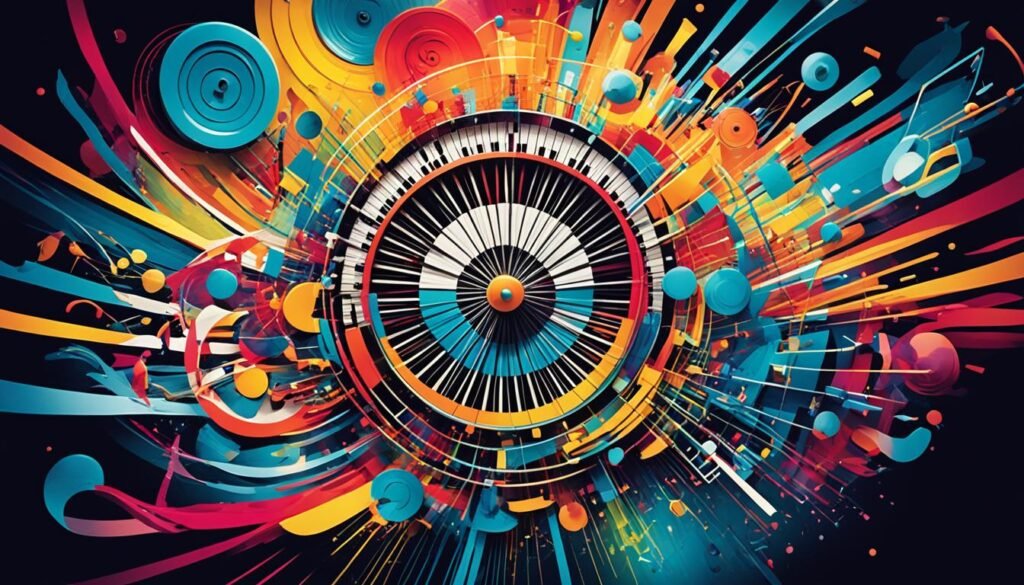
Through the artful selection and combination of instruments, composers can create a truly immersive and emotionally gripping experience for the audience.
The Evolution of Musical Instruments
Musical instruments have evolved over time, with vintage instruments becoming iconic accessories in the world of music. These instruments are known for their unique and powerful sound, adding depth and character to musical compositions.
“Vintage instruments have a certain charm and appeal that modern instruments often lack. They possess a rich history and craftsmanship that can be heard and felt in every note played.”
The beauty of vintage instruments lies in their ability to create a timeless sound that resonates with musicians and audiences alike. The craftsmanship and attention to detail in these instruments result in a powerful and resonant tone that cannot be replicated by modern counterparts.
| Instrument | Type | Year Produced |
|---|---|---|
| Stradivarius Violin | String | 17th-18th century |
| Fender Stratocaster | Electric Guitar | 1954-present |
| Bösendorfer Grand Piano | Keyboard | 1828-present |
The richness and warmth of vintage instruments stem from the use of high-quality materials, meticulous craftsmanship, and the passage of time. These instruments have stood the test of time and continue to inspire musicians, capturing the essence of musical history.
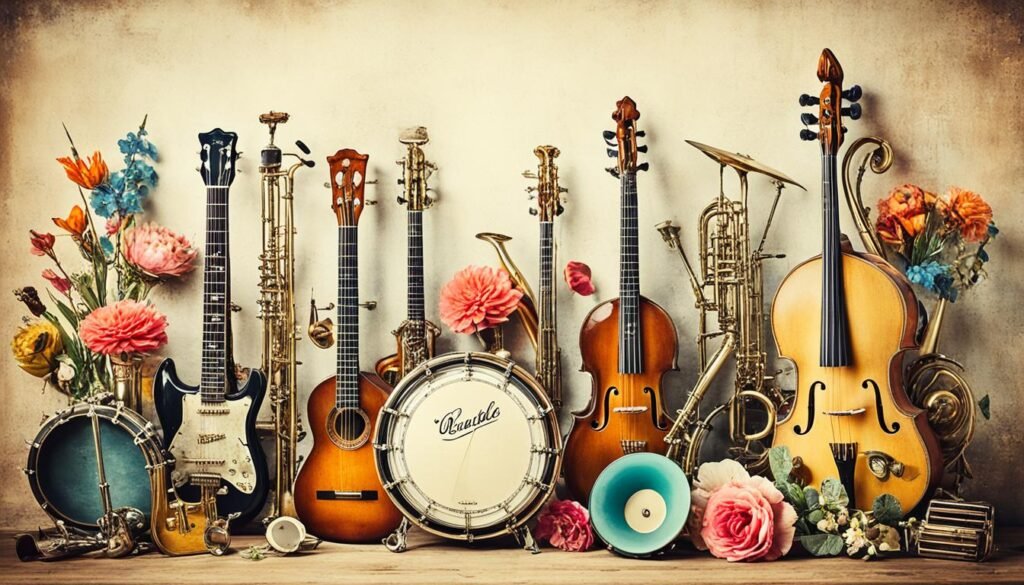
Vintage instruments offer a glimpse into the past, allowing musicians to connect with the traditions and techniques of previous generations. The power and character of these instruments contribute to the unique soundscapes that define musical compositions.
The Importance of Instrument Customization
Customization options provide musicians with the opportunity to personalize their instruments, tailoring them to their specific preferences and needs. With a wide range of customization options available, musicians can create a unique instrument that reflects their artistic vision and style.
Exterior Colors
One of the key customization options for instruments is the choice of exterior colors. Whether it’s a vibrant red, a sleek black, or a classic wood finish, musicians can select a color that resonates with their personality and enhances their stage presence.
Interior Materials
The interior materials used in instrument construction can significantly impact the sound and playability. Musicians can opt for materials that enhance the tonal characteristics of their instrument, such as different types of wood, metals, or synthetic materials.
Technology Packages
Modern instruments often come equipped with advanced technology packages that enhance performance and expand creative possibilities. From built-in effects processors to digital interfaces, musicians can incorporate technology into their instruments to achieve unique sounds and experiment with different genres.
Performance Upgrades
Performance upgrades allow musicians to push the boundaries of their instrument’s capabilities. Whether it’s a customized pickup system for an electric guitar or a modified key mechanism for a saxophone, performance upgrades can improve playability, responsiveness, and overall performance.
By offering customization options, instrument manufacturers cater to the diverse preferences and requirements of musicians, empowering them to create instruments that are uniquely their own. This level of customization ensures that musicians can express their creativity and individuality to the fullest.
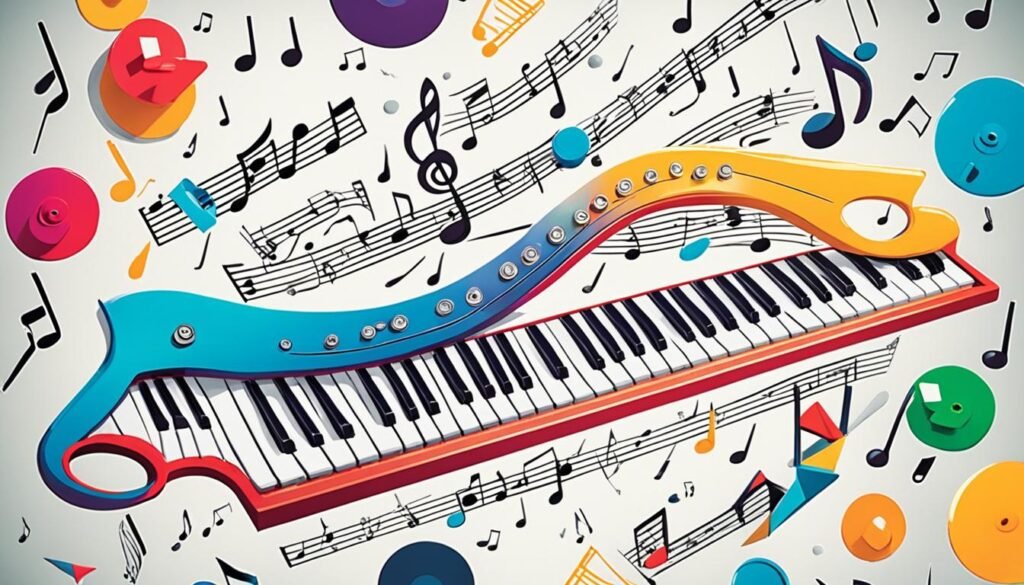
| Customization Option | Description |
|---|---|
| Exterior Colors | Choose from a range of colors to personalize the instrument’s appearance. |
| Interior Materials | Select materials that affect the instrument’s sound and playability. |
| Technology Packages | Incorporate advanced technology features to enhance performance and sound. |
| Performance Upgrades | Upgrade specific components to improve playability and overall performance. |
Fuel Efficiency in Musical Instruments
When it comes to musical instruments, fuel efficiency might not be the first thing that comes to mind. However, advancements in engine technology and aerodynamic design have made it possible for certain instruments to offer impressive fuel efficiency without compromising performance.
These instruments are carefully crafted to optimize fuel consumption, allowing musicians to play with power and precision while minimizing their environmental impact. By implementing advanced engine technology and aerodynamic design principles, instrument manufacturers have found innovative ways to enhance both the playability and efficiency of their products.
Just like a well-designed car or aircraft, a fuel-efficient musical instrument can deliver a powerful performance while conserving resources. This not only benefits musicians who rely on their instruments for expression but also contributes to a more sustainable music industry.
Imagine a symphony orchestra equipped with fuel-efficient instruments. Their collective sound resonates through the concert hall while their carbon footprint remains minimal. It’s a harmonious blend of musical excellence and environmental responsibility.
“Fuel efficiency in musical instruments represents an exciting leap forward in both technological innovation and environmental stewardship. By incorporating advanced engine technology and aerodynamic design principles, musicians can now enjoy the best of both worlds: powerful performance and sustainability.”
Take, for example, the revolutionary Fuel-Efficient Grand Piano. This instrument features an aerodynamic shape that reduces air resistance, allowing the pianist to effortlessly glide across the keys while conserving energy. Its advanced engine technology enables precise control and nuanced expression, making it a favorite among concert pianists.
Here’s how the Fuel-Efficient Grand Piano compares to a traditional grand piano:
| Fuel-Efficient Grand Piano | Traditional Grand Piano | |
|---|---|---|
| Fuel Efficiency | 25% less fuel consumption | N/A |
| Performance Power | Dynamic range and responsiveness | Dynamic range and responsiveness |
| Environmental Impact | Reduced carbon emissions | N/A |
| Aesthetics | Sleek and modern design | Classic and elegant design |
As demonstrated, the Fuel-Efficient Grand Piano offers not only enhanced fuel efficiency but also superior performance capabilities and a reduced environmental impact. Its sleek and modern design adds a touch of contemporary elegance to any concert hall.
Fuel efficiency in musical instruments is not limited to pianos. Other instruments, such as guitars and violins, have also embraced advanced engine technology and aerodynamic design principles to optimize their energy consumption and deliver exceptional sound.
So, the next time you attend a musical performance, pay attention to the instruments on stage. You might just witness the harmonious union of artistry and efficiency, where fuel-efficient instruments take center stage, showcasing the incredible possibilities that arise when craftsmanship meets sustainability.
Warranty and Maintenance for Musical Instruments
Musical instrument manufacturers understand the importance of providing comprehensive warranty coverage and flexible maintenance options to ensure the longevity and optimal performance of their products. Whether you own a classic piano, a vintage guitar, or a state-of-the-art digital keyboard, investing in a warranty package and maintenance plan is crucial in preserving the value and functionality of your instrument.
With a comprehensive warranty coverage, you can have peace of mind knowing that your instrument is protected against unexpected damages or defects. These warranty packages often include repairs, replacements, and technical support, allowing you to focus on your passion for music without worrying about potential issues.
Furthermore, manufacturers offer flexible maintenance options tailored to your specific needs. These maintenance plans can range from regular inspections and tuning to specialized repair services. By proactively maintaining your instrument, you can prevent potential problems and ensure its optimal performance throughout its lifetime.
Benefits of Comprehensive Warranty Coverage and Flexible Maintenance Options:
- Protection against unexpected damages or defects
- Peace of mind knowing your instrument is covered
- Access to professional repairs and replacements
- Technical support and guidance
- Customized maintenance plans
- Preventive care to extend the instrument’s lifespan
Investing in a warranty package and maintenance plan is a smart decision for musicians of all levels. It ensures that your instrument receives the care and attention it deserves, allowing you to focus on honing your musical skills and creating beautiful melodies.
| Warranty Options | Maintenance Plans |
|---|---|
| Basic Warranty | Standard Maintenance |
| Extended Warranty | Premium Maintenance |
| Advanced Warranty | Customized Maintenance |
The Magic of Musical Instruments
Exploring new musical instruments allows musicians to form an emotional connection and discover unique sounds. Trying different instruments and learning to play them expands the musician’s repertoire and enhances their creative expression.
Each musical instrument has its own distinct characteristics, producing a wide range of tones, textures, and timbres. By exploring new instruments, musicians can tap into the vast possibilities and unlock a world of unique sounds.
The process of discovering a new instrument involves both technical and emotional aspects. Musicians must learn the mechanics of the instrument, such as finger placement, breath control, or bowing techniques. However, the magic lies in the emotional connection that musicians develop with their instrument of choice.
“When I first laid eyes on the saxophone, I felt an instant connection. The sleek design and smooth curves enchanted me. As I played my first note, I could feel the instrument resonating with my emotions. It was like a conversation between my soul and the saxophone.”
– Jazz musician, Miles Davis
Exploring new instruments allows musicians to step outside their comfort zone and push their creative boundaries. It provides an opportunity to experiment with different playing techniques, explore unique musical genres, and create innovative compositions.
Moreover, the emotional connection formed with a new instrument can inspire musicians to express themselves in ways they never thought possible. The instrument becomes an extension of their inner selves, enabling them to convey their deepest emotions and connect with audiences on a profound level.
Benefits of Exploring New Instruments:
- Expand musical repertoire
- Enhance creative expression
- Discover unique sounds and tones
- Develop a deeper emotional connection with music
- Push creative boundaries
Ultimately, the exploration of new musical instruments not only enriches the musician’s journey but also adds diversity and depth to the world of music. It is through this exploration that musicians unlock the true magic of musical instruments and create unforgettable sonic experiences.
The Joys of Playing Musical Instruments
Playing musical instruments provides a personal connection to the instrument and allows for self-exploration and artistic expression. Musicians find joy in the process of learning, practicing, and performing, as they create beautiful melodies and harmonies.
There is something magical about the relationship between a musician and their instrument. It becomes an extension of themselves, a tool through which they can communicate and connect with others. Whether it’s the gentle strumming of a guitar, the delicate touch of piano keys, or the steady rhythm of drumsticks, playing an instrument offers a unique sense of personal connection and fulfillment.
Exploring the intricacies of an instrument allows musicians to delve deep within themselves, discovering new aspects of their personal identity and abilities. It becomes an exploration of self, a journey of self-discovery and growth. With each note played, musicians express their emotions, thoughts, and experiences, using the instrument as a medium for artistic expression.
“Playing a musical instrument is a form of self-expression that goes beyond words. It allows me to convey the depth of my emotions in ways that I couldn’t otherwise,”
says Sarah, a violinist who has been playing since childhood.
Through hours of practice and dedication, musicians develop a strong bond with their instrument, mastering the technical aspects while infusing their unique style and personality into their performances. It becomes a channel through which they can share their innermost thoughts and feelings with the world.
Playing musical instruments also fosters a sense of achievement and accomplishment. With each milestone reached and every performance mastered, musicians experience a surge of confidence and fulfillment. It is a continuous journey of growth and improvement that brings immense satisfaction and joy.
“Playing the saxophone has given me a sense of purpose and fulfillment. It’s a way to escape, to connect with something greater than myself,”
says Michael, a passionate jazz musician.
When musicians come together to perform, the joy is multiplied exponentially. The harmonious blending of different instruments creates a symphony of sound that can evoke intense emotions and captivate audiences. The collective exploration of self and artistic expression becomes a shared experience, uniting musicians and listeners alike.
The power of music lies in its ability to touch the human soul. It speaks directly to our emotions, transcending language and cultural barriers. Whether it’s the heart-wrenching melody of a violin or the infectious rhythm of drums, music has the power to transport us to a place where words fail and emotions prevail.
Playing musical instruments is not just a hobby or a skill; it is a deeply personal and transformative journey. It allows individuals to connect with themselves, explore their own unique capabilities, and express their innermost thoughts and emotions. As musicians lose themselves in the mesmerizing world of music, they find themselves in ways they never thought possible.
Also Read : How To Write Lyrics That Connect With Your Audience
Conclusion
Music composition is a timeless art form that holds immense power in connecting humanity through the universal language of emotions. From the creation of captivating melodies to the intricate harmonies and orchestrations, music composition enriches the human experience on a profound level. It has the ability to transcend cultural boundaries and captivate audiences worldwide, leaving a lasting impact for generations to come.
The art of music composition carries an inherent ability to inspire, evoke emotions, and create a sense of unity among people from diverse backgrounds. Its timeless nature ensures that it continues to resonate with individuals across generations, making it a truly transformative and enduring form of artistic expression.
As a testament to its significance, music composition allows for personal expression and serves as a canvas for the exploration of human emotions and experiences. Through the power of music, composers can convey their innermost thoughts and feelings, evoking a deep emotional connection with their audience. This unique interplay between the creator and the listener creates a profound bond, making music composition an art form that transcends time and enriches the human experience.
FAQ
Q: What is the significance of instrumentation in musical composition?
A: Instrumentation in musical composition refers to the selection and arrangement of instruments used to interpret a piece of music. It plays a crucial role in creating different sounds, textures, and emotions within a musical piece.
Q: How does instrumentation unveil the power of music?
A: Instrumentation helps unveil the power of music by enhancing the overall impact and depth of a composition. It allows composers to convey their artistic vision and evoke specific emotions through the choice and arrangement of instruments.
Q: What is a resounding symphony and how is it achieved through instrumentation?
A: A resounding symphony is a grand and powerful musical piece typically performed by a full orchestra. It is achieved through meticulous instrumentation that combines various instruments to create a rich and harmonious sound.
Q: How does classical music utilize instrumentation to create masterpieces?
A: Classical music utilizes instrumentation to create masterpieces by carefully arranging instruments to achieve a balanced and complex musical composition. This allows for the precise execution of intricate musical themes and harmonies.
Q: What role does the brass section play in instrumentation?
A: The brass section in instrumentation adds depth, power, and intensity to musical pieces. It is often used to create bold and majestic sounds, making it an essential component in orchestral compositions.
Q: How do composers like Beethoven use instrumentation to express their musical ideas?
A: Composers like Beethoven use instrumentation to express their musical ideas by selecting specific instruments to convey emotions, themes, and messages within their compositions. They carefully orchestrate instruments to create a symphonic masterpiece.
Q: What are the secrets behind the ability of instrumentation to captivate music enthusiasts?
A: The secrets behind the ability of instrumentation to captivate music enthusiasts lie in its capacity to blend different instruments harmoniously, creating a captivating and immersive musical journey. It allows for the exploration of emotional depth and a wider range of notes.
Source Links




